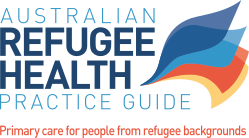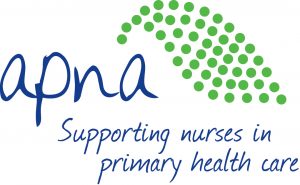TESTING Search and Filter
SnF-ApproachToPatientCarePage 1 of 1
Refugee patients in primary care
Key points People from refugee backgrounds, including people seeking asylum, come from a diversity of backgrounds and experiences. People from refugee backgrounds will have similar health concerns to their Australian-born counterparts, but may also have health issues specific to their country of origin and their migration and settlement experience. People from refugee backgrounds have higher […]
Identifying patients from refugee backgrounds
Key points Identification of people from refugee backgrounds, including people seeking asylum, is important so that healthcare providers can tailor their approach. There are a number of indicators that a person may be from a refugee background. These include: country of birth year of arrival in Australia need for interpreter preferred language visa type referral […]
Whole of practice approaches
Overview An empathetic, person-centred, culturally responsive approach is highly valued by people from refugee backgrounds.1 It requires a whole-of-practice approach. Consider the following at reception: welcoming reception staff, bilingual if available waiting spaces with information in local refugee community languages clear signage about the availability of interpreters flexible waiting spaces for children’s play as well as […]
Communication and interpreters
Overview The majority of newly arrived people from refugee backgrounds do not speak English or do not speak English well,1 yet research shows that credentialed, professional interpreters are only engaged for a small percentage of consultations in primary care.2 Healthcare providers have a professional obligation to understand their patients’ needs and patients have the right to […]
Approach to consultation and management
“The way the doctor treats you personally is half the medicine…” Community consultation participant, QLD Key points Person-centred care principles are useful to understand each individual’s background and current needs. A universal precautions approach to pre-migration trauma is recommended when caring for people from refugee backgrounds, including people seeking asylum. Consider health literacy and cultural factors […]
Refugee health assessment
Overview Offer a comprehensive post-arrival health assessment to every child, adolescent and adult from a refugee background who is new to your care, preferably within one month of arrival. Always use person-centred care principles that consider the impact of past trauma. Use language and gender appropriate interpreters. See Approach to consultation and management, Communication and […]
Prescribing tips
Overview Taking medications correctly requires the use of effective communication techniques to reduce non-adherence, adverse events or failure to take medication as prescribed. Failure to do this increases the risk of medication errors.1 Many people from refugee backgrounds, including people seeking asylum, come from areas where pharmaceuticals are poorly regulated and understood. Approach to care […]
Tips for making referrals
Key points Further investigations and specialist referrals may present significant additional challenges for people from refugee backgrounds, including people seeking asylum, who may require additional practical support. Consider seeking the specialist’s advice about whether a referral is appropriate prior to making the referral. Include information about the need for an interpreter and preferred language in […]
Management of psychological effects of torture or other traumatic events
Overview People from refugee backgrounds, including people seeking asylum, vary in their readiness to disclose previous trauma, and much depends on context, and the empathy, warmth and skill of the clinician. Talking about past experiences can may be psychologically beneficial in the right circumstances. However, the knowledge that the patient may have endured certain experiences […]
Page 1 of 1




